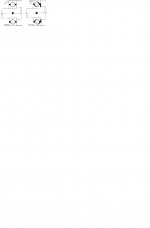RobSelina
Jedi Warrior
Offline
So I started replacing the rear wheel bearings yesterday. I completed the passenger side bearings and brakes and I understand now why we need double bearing hubs.
The bearings, even new ones, leave a lot of play in the hub face. When using stock ball bearings, I can see why you need double bearings to stop axle flange flex and breakage. The cost of these kits is high though, so I'm wondering what would prohibit the use of Timken style tapered roller bearings?
You could press the race into the hub along with the seal, then put the hub on the spindle and press on the tapered bearing, using the retaining nut for bearing tension. This (assuming i can find one that fits), would eliminate most of the flex at the flange and I don't see any adverse effects. I've only ever dealt with timken style bearings before the so the weakness in the single ball bearing design seems unecessary. I'm questioning if the timken conversion I'm considering is feasible though, since if it was, I'd assume it would be a standard conversion for most race cars instead of double bearing hubs.
So, where's the flaw in my logic?
Thanks, /ubbthreads/images/graemlins/cheers.gif
The bearings, even new ones, leave a lot of play in the hub face. When using stock ball bearings, I can see why you need double bearings to stop axle flange flex and breakage. The cost of these kits is high though, so I'm wondering what would prohibit the use of Timken style tapered roller bearings?
You could press the race into the hub along with the seal, then put the hub on the spindle and press on the tapered bearing, using the retaining nut for bearing tension. This (assuming i can find one that fits), would eliminate most of the flex at the flange and I don't see any adverse effects. I've only ever dealt with timken style bearings before the so the weakness in the single ball bearing design seems unecessary. I'm questioning if the timken conversion I'm considering is feasible though, since if it was, I'd assume it would be a standard conversion for most race cars instead of double bearing hubs.
So, where's the flaw in my logic?
Thanks, /ubbthreads/images/graemlins/cheers.gif

 Hi Guest!
Hi Guest!

 smilie in place of the real @
smilie in place of the real @
 Pretty Please - add it to our Events forum(s) and add to the calendar! >>
Pretty Please - add it to our Events forum(s) and add to the calendar! >> 




